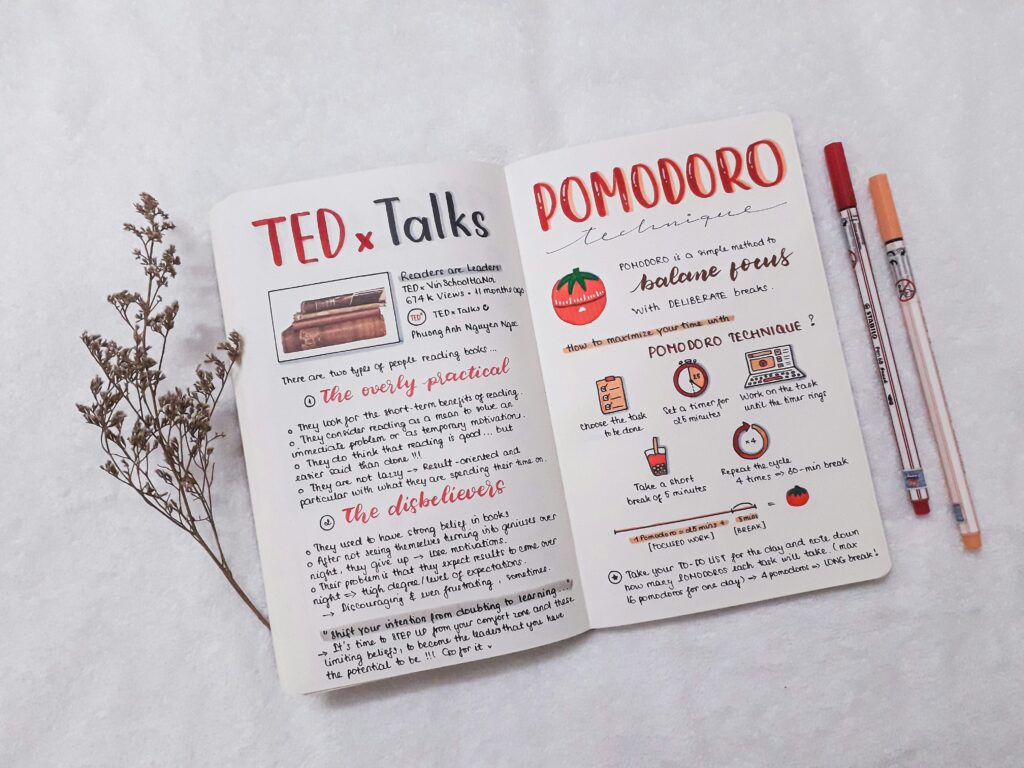Let’s face it: time management often feels like trying to herd cats. You start the day with a plan, and then poof—your focus scatters, your to-do list grows, and by 3 PM, you’re Googling “how to be a llama farmer” to escape adulthood. Enter the Pomodoro Technique, a quirky, tomato-shaped solution to reclaim your productivity.
But does it actually work? Can 25-minute sprints really outsmart procrastination? Let’s dive into the science, the hacks, and the “wait, why didn’t I try this sooner?” moments.
What Pomodoro Technique Means: Tomatoes, Timers, and Triumph
Picture this: It’s the 1980s. Francesco Cirillo, a frazzled university student, grabs a tomato-shaped kitchen timer (pomodoro means “tomato” in Italian) and challenges himself to study for just 25 minutes. Spoiler: It worked. Today, his Pomodoro Technique is a global phenomenon, turning time management into a game of focus sprints and strategic breaks.
At its core, the method is simple:
- Work for 25 minutes.
- Take a 5-minute break.
- Repeat. After 4 cycles, take a 15–30 minute break.
But as Cirillo explains, it’s not just about timers—it’s about training your brain to respect intentional work.
How Pomodoro Technique Works: The Step-by-Step Playbook
Let’s break down the ritual:
- Choose Your Battle: Pick a task (e.g., writing a report, coding).
- Set the Timer: Use a physical timer, app, or YouTube video (yes, Pomodoro soundtracks exist).
- Work Like a Robot: No distractions. No Instagram. Just laser focus until the buzzer.
- Break Like a Human: Stretch, hydrate, or dance to “Livin’ on a Prayer.”
- Rinse & Repeat: After 4 Pomodoros, reward yourself with a longer break.
Pro Tip: Track completed Pomodoros with a tally sheet. There’s magic in seeing those tomatoes stack up.
Why Pomodoro Technique Is Effective: The Science of Tiny Wins
Why does this work? Blame (or thank) your brain’s love for instant gratification. Short bursts of work:
- Reduce Overwhelm: 25 minutes feels manageable, even for daunting tasks.
- Boost Dopamine: Checking off a Pomodoro triggers a mini reward high.
- Prevent Burnout: Regular breaks keep mental fatigue at bay.
A University of Illinois study found that brief diversions (like Pomodoro breaks) can double focus and creativity.
Pomodoro Technique vs Flow State: Frenemy Alert
Here’s the catch: Pomodoro’s rigid intervals can clash with the flow state—that blissful zone where hours feel like minutes. Creative tasks (writing, designing) often need uninterrupted time.
The Fix:
- Use Pomodoro for shallow work (emails, admin).
- For deep work, extend intervals to 50–90 minutes. Apps like Reclaim.ai let you customize sessions.
Pomodoro Technique and ADHD: A Match Made in Focus Heaven
For those with ADHD, traditional time management often feels like juggling spaghetti. Enter Pomodoro:
- Structure Without Suffocation: Short sprints prevent overwhelm.
- Physical Timer = Accountability: The ticking clock is a gentle nudge to stay on task.
- Breaks Reward Effort: 5 minutes of TikTok? Yes, after the timer dings.
A 2022 survey found 68% of ADHDers reported improved focus using Pomodoro.
How to Do Pomodoro Technique: Pro Tips for Newbies
Preparation is key:
- List Tasks the Night Before: Use Todoist to prioritize.
- Batch Similar Tasks: Group emails, calls, or errands into single Pomodoros.
- Set Up a Distraction-Free Zone: Noise-canceling headphones + website blockers = focus fortress.
When Interruptions Strike:
- Internal Distractions (e.g., “I need to Google capybaras”): Jot it down and revisit during breaks.
- External Distractions (e.g., chatty coworkers): Politely say, “I’m in a Pomodoro—can we connect in 20?”
Pomodoro Technique App Showdown: Digital vs Analog
| Tool Type | Best For | Top Picks |
|---|---|---|
| Apps | Tech lovers | Focus Keeper (iOS) |
| Browser Extensions | Desktop warriors | Marinara Timer (Chrome) |
| Physical Timers | Nostalgic souls | Pomodoro Kitchen Timer (Amazon) |
Bonus: Gamify your progress with Habitica, turning Pomodoros into XP points for slaying productivity dragons.
Pomodoro Technique Timer: Online vs Offline Smackdown
- Online Timers: Great for customization (e.g., adjusting intervals). Try Cuckoo.team for collaborative Pomodoro sessions.
- Offline Timers: No internet? No problem. A $10 kitchen timer works wonders—plus, the tick-tock sound is weirdly motivating.
Pomodoro Technique Benefits: More Than Just Productivity
Beyond checked-off tasks, Pomodoro serves up:
- Mental Clarity: Less decision fatigue = clearer thinking.
- Work-Life Balance: Scheduled breaks = guilt-free Netflix binges.
- Confidence Boost: Finishing tasks → “I adulted today!” vibes.
As Lucidchart notes, 78% of users feel more in control of their workload.
Pomodoro Technique Explained: The Fine Print
Advantages
- Slashes Procrastination: Starting is the hardest part—25 minutes feels less scary.
- Builds Momentum: Each Pomodoro is a win, fueling motivation.
- Exposes Time Sinks: Tracking Pomodoros reveals how long tasks actually take.
Disadvantages
- Flow State Foe: Interruptions can derail creative mojo.
- Rigid Structure: Not ideal for collaborative or unpredictable jobs.
- Timer Anxiety: Some find the ticking stressful (swap for silent vibrations).
The Bottom Line: Is Pomodoro Worth the Hype?
Yes—but with a caveat. The Pomodoro Technique isn’t a one-size-fits-all fix. It’s a tool, not a cult. Use it to:
- Jumpstart Stalled Projects
- Tame Chaotic Days
- Train Your Focus Muscles
And if tomatoes aren’t your thing? Rename it. Try the “Taco Technique” or “Sushi Sprint.” The goal isn’t perfection—it’s progress.
So grab a timer, block your next 25 minutes, and let’s see what you can conquer. (Just don’t forget to breathe.)
What’s your Pomodoro win? Did you survive a work marathon or finally fold laundry? Share below—we’re all in this tomato-filled boat together, remote work journey.]
Have you tried the Pomodoro Technique? Share your experiences and tips in the comments below. We’d love to hear how you’ve adapted this method to your remote work routine.
Remember: Productivity isn’t about working more – it’s about working smarter. The Pomodoro Technique helps you do exactly that.


